Next up is Marvel’s sales band chart for May. And Marvel’s sales are a little more complicated to look at than you might think.
Standard disclaimers: The numbers are based on the Diamond sales charts as estimated by the very reliable John Jackson Miller. These charts are pretty accurate for U.S. Direct Market sales with the following caveats: 1) you can add ~10% for UK sales, which are not reflected in these charts; 2) everyone’s best guess is you can add ~10% for digital sale – while some titles do sell significantly better in digital (*cough* Ms. Marvel *cough*), that’s the average rule of thumb; 3) it’s not going to include reorders from subsequent months, although reorders will show up in subsequent months if they’re high enough. So if you’re a monster seller in Southampton and the it took the US audience 3 weeks to reorder, it’s probably not going to be reflected here.
What’s a sales band? Its another way to have a higher level view of the market. The general idea is to divide the market into bands of 10K copies sold and see how many issues are in each band. How many issues sold between 90-99K copies, 80-89K copies, etc. etc. In very broad terms, the market is healthier when there are several titles selling in the 70K-100K+ range because titles that move a lot of copies give the retailers some margin of error on their ordering. When you see titles selling in the 20-29K band and especially below, there’s a pretty good chance a lot of retailers aren’t ordering those titles for the shelf (pull box/pre-order only) or minimal shelf copies at best.
At first glance, Marvel’s sales chart looks promising. Multiple issues selling 100K+, ALL the bands hit in an era where sales over 60K are getting rare. Far more issues selling under 20K than is ideal, but some actual top list.
But the trouble is there are really two Marvel sales charts. One for the first issues with all their hype and variant covers, plus whatever Event mini-series are being pushed. A second chart for their ongoing titles. What say we separate those out and see what the difference looks like?
That’s the events and #1/variant cover chart. Perhaps we should call it the David Gabriel chart, since Marvel’s VP of sales puts a big emphasis on those. This chart is specifically all the first issues for the month, plus Venom #150, which is from that same variant playbook and any mini-series issue with “Secret Empire” in the title. When you look at that chart, you see that almost all their top list is a first issue or an event. And we all know that those first issue sales disappear pretty darn fast.
And here’s what the ongoing titles look like. And yes, that includes some #2s and #3s from titles that didn’t hold on to their first issues sales. At all.
You’ve still got Star Wars at just under 71K. The highest, non-first issue ongoing title set in the Marvel Universe is X-Men Gold, at 57.5K/52.7K for the two issues out in May. Which means Marvel parted ways with the editor of their bestselling ongoing MCU title, at least in terms of May DM orders. Amazing Spider-Man, which used to be above the fray, is down to 51.4K, which is pretty low for the primary Spidey title in recent years. Remember when Invincible Iron Man was supposed to be the new flagship title for Marvel? It’s under 30K.
The takeaway from this chart is that an ongoing title that breaks 40K is probably considered a hit at Marvel. You might even be able to make an argument that 35K is a hit. Over a third of the Marvel line seems to be coming in under 20K sales in the U.S. Direct Market. Which would have been inconceivable not too long ago.
There are things we don’t see with these charts. The biggest invisible elephant being the trade paperback sales into places like the Scholastic market. For example, Moon Girl and Devil Dinosaur is not a big seller in the DM, but it’s widely thought to be selling in large quantities for Scholastic. And Scholastic doesn’t report their numbers to Bookscan, so we’re left with rumors for this sort of thing. That’s not going to be the case for every low selling DM title, though.
The difference between those two charts is striking. What’s going on there?
It’s likely that Marvel is having more success targeting collectors than readers, at least for single issues in the DM. Collectors willing to show up and buy multiple copies of the same comic to get all the covers. Maybe they only collect variants, maybe not. You’ve also got retailers ordering vast quantities of #1s they have no expectation of selling so they can lay hands on a few variants they can charge a premium for. Marvel seems to have the math figured out so retailers are making money and they’re still selling those variants. (It sure would be interesting to see sell through data on those #1s, wouldn’t it?)
The question is how long can you sustain a collector’s market for variants? Especially if you’re kicking them out so frequently?
Since the success of Civil War, Marvel has also trained readers to look for the “comics that matter” and move along the story of the universe. And it seems like there must be a group of fans who mostly show up for the events. De-emphasizing the storylines of individual titles and emphasizing only things leading into events is a monster of Marvel’s own creation. You can’t feel sorry for it, but when you hear all the promises of stories that “matter,” it makes a person wonder if it’s gotten a bit out of control.
You can see why Gabriel would be able to win an argument about the events and variants. That’s what’s working. The ongoing titles are in bad shape and would be in worse shape without Star Wars in what passes for a top list. The thing is, fads don’t last forever and if the readers aren’t coming back by the time the variants cool off, it’s going to make the variant cover crash of the late 90s look like a bull market.
We’ll have to see is there’s more to Marvel’s Legacy than some covers. If the covers are fancy enough, maybe there’s a burst of sales. Maybe enough to paper over everything else for the quarterly report. But if that’s all there is, the ongoing titles could very well be digging a bigger hole they’ll eventually need to crawl out of if they’re anything other than a loss leader for trade paperbacks.
Want to learn more about how comics publishing and digital comics work? Try Todd’s book, Economics of Digital Comics or have a look at his horror detective series on Patreon.


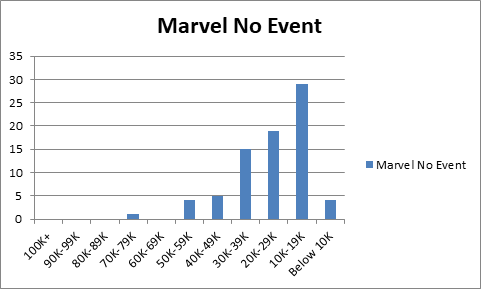
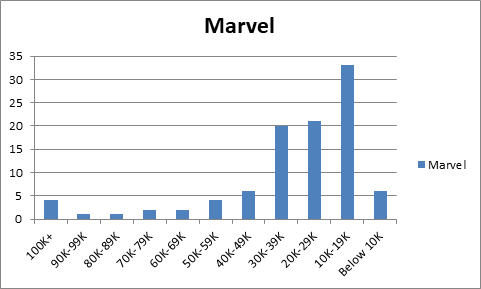
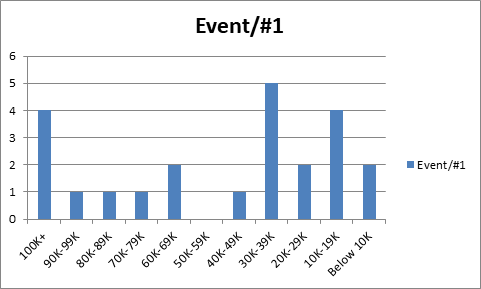
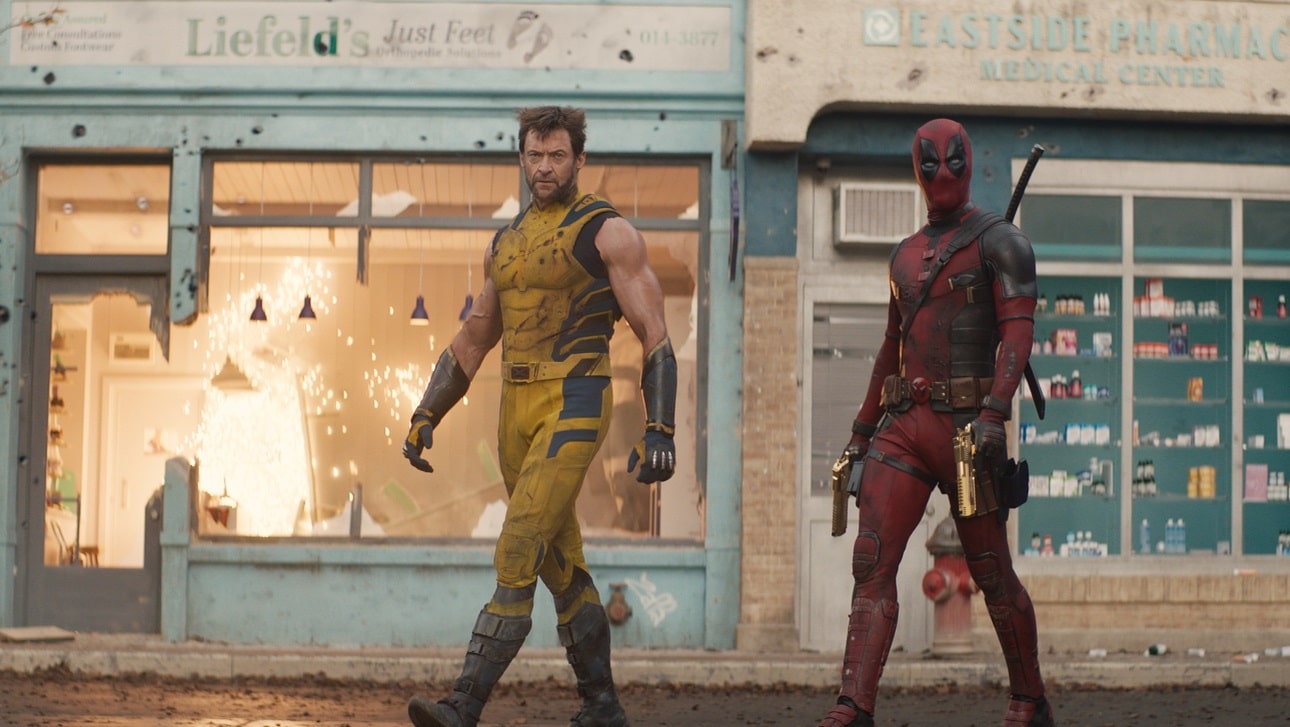


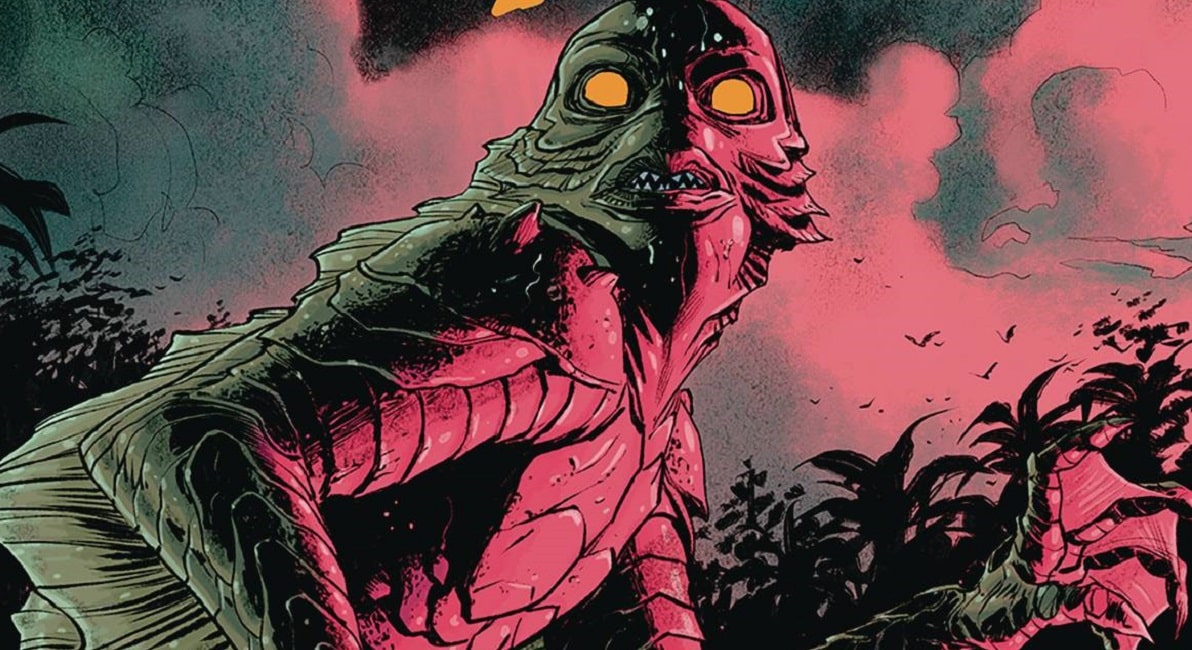

Looking at the #1 issues for their big events over the past 3 years shows diminishing returns even on that trick.
Secret Wars #1 (2015): 521K
Civil War II #1 (2016): 381K
Secret Empire #1 (2017): 157K
#1 relaunches are showing a similar slump.
As a retailer that was in business in the nineties, I still remember the comic crash like it was yesterday. The variant madness and speculation going on in today’s market makes the early nineties look like the good old days. It is mind boggling that today’s retailers, publishers and collectors are so naive. Variant madness did not end well in the nineties and things will be even worse when it happens this time. And yes, it is happening as I write this……
I’m not a retailer, so disclaimer. But for me, it’s not the plethora of titles like Squirrel Girl or Gwenpool or America that are worrisome.: They bring Marvel a different type of audience, new readers, and were never meant to be top sellers in the current market.
What I find disturbing is the fact that all their A-List titles are barely making it beyond 30K. Both Hulks, a Captain America book, both Iron Man books, all the Avengers books… I can’t believe Marvel are so complacent about the performance for these titles.
We know that a decade of neglect and complacency really hurt and is still hurting the X-Men line. I would give anything to know what they are thinking…
Comics are not where the money is any more. They’re just storyboards for movies. Simple as that.
@jd1234 – Those A list titles don’t sell because they are A list in title name only. 90% of the Marvel big guns have an imposter at the throne. People don’t want to read about Riri and Asian Hulk, They want Tony and Bruce – But even then, not sure it will help now as a lot of their writers are very new to comics and are just not very good.
Sam nailed it.
As far as the diminishing returns for the “event” #1 issues, Secret Wars was something that had a VERY long build up and promised to really redefine everything at Marvel. Understandable why it was so heavily ordered. Civil War II wound up pretty much being dreck and most people probably saw it as Marvel rehashing old territory. Secret Empire? C’mon. It’s the culmination of Marvel’s ill advised attempt to be edgy and different by totally ruining Captain America. Most people just aren’t interested in seeing Marvel destroy a beloved institution.
From my point of view, the problem with the main line is the lack of focus. After AvsXm we got Uncanny Avengers, a mixed group with X-Men and Avengers, and a reunion that was special in the past became something that happens in 10 books each month. If Spidey is on 10 books, there’s nothing special about seeing him fighting an X-Villian.
I don’t thing the problem is diversity or legacy characters, it’s just that they can’t sustain Marvel on their own after a couple of years of being introduced. That’s hard even for the classics.
At some point Marvel should focus in their new audience and forget about the older white dudes that will never come back who buyed comics out of habit.
Comments are closed.